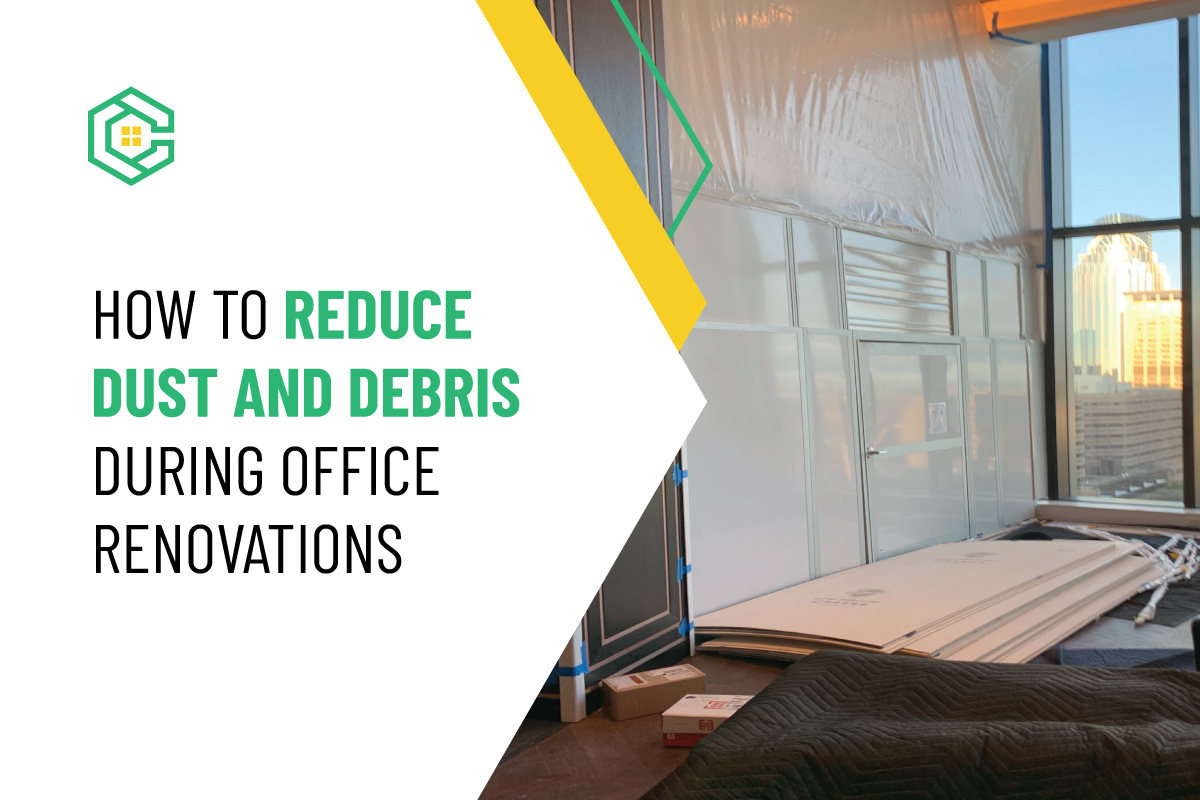Office renovations are necessary to update workspaces and improve functionality. However, they can cause disruptions and safety issues if not managed properly. One of the biggest problems faced during office renovations is excessive dust and debris. Left uncontrolled, dust can spread throughout the office, impacting indoor air quality, workflows, and employee health. In this blog, we will discuss the common dust-related issues during renovations and provide some effective tips to minimize them, including installing temporary wall systems.
PROBLEMS WITH DUST AND DEBRIS DURING OFFICE RENOVATIONS
Renovation activities like demolition, drywall work, grinding, sanding, etc. generate a lot of airborne particles that circulate as dust. In open-plan offices, this dust easily spreads across different areas through ventilation ducts. Some major issues include:
– Employee & Customer Discomfort: Excessive dust in the air can cause allergies, coughing, sneezing and other respiratory problems among occupants. It makes the workspace very unattractive.
– Safety Hazards: Fine dust particles can be a safety concern if they come in contact with electronic equipment or get inside the lungs of workers. It may also hide tripping hazards on the floor.
– Impact on Operations: Dust settling over computers, files, and furniture can damage them. It may slow down operations and reduce productivity until deep cleaning.
– Indoor Air Quality Issues: Improper dust containment fails to maintain good indoor air quality standards. Prolonged exposure to contaminated air poses long-term health risks.
TIPS TO REDUCE DUST DURING OFFICE RENOVATIONS
To effectively manage dust, contractors must implement strict controls from the start. Some effective measures include:
1. Install Temporary Wall Systems: Installing temporary wall systems is the most effective way to contain dust. The temporary modular walls or dust shield temporary wall system can be quickly erected to physically separate the renovation area from occupied spaces. These temporary wall solutions form an impervious barrier that encapsulates the dust, debris and noise within the work area. By blocking pathways for the dust to migrate out, indoor air quality and safety in occupied spaces are safeguarded. Premium quality STARC Wall System also allow work to progress seamlessly without disrupting office productivity.
2. Use Dust Barriers: Plastic sheets, vinyl curtains or barriers made of filter material can be installed at doors, HVAC vents and other openings to block dust pathways.
3. Control Dust at the Source: Controlling dust at its source is crucial to prevent spreading. Techniques like wet cutting of materials dampen down dust instantly. Covered chutes enclosed hazardous demolition debris. Negative air machines extract dust-filled air in containment areas before it can circulate out. Together such source-control methods help minimize dust release during renovation work.
5. Clean Frequently: Thorough cleaning each day is important to managing dust accumulations. Renovation areas, equipment and tools should be wiped clean of all visible dust deposits. Workers’ shoes must be inspected and vacuumed daily as well to dispose of any caked dust before it detaches and flies off. Using HEPA vacuum cleaners with microscopic filtration ability allows for deep dust removal without it escaping back into the air.
6. Monitor Air Quality: Using portable PM counters helps contractors monitor airborne particulate matter levels in real time. Work must stop if levels spike above permissible exposure limits.
Conclusion
Strategically controlling dust is essential for maintaining business operations, safety and indoor air quality during office renovations. Temporary wall systems like those provided by Containment Wall Solutions form the backbone of an effective dust containment strategy. Our STARC Wall Systems help isolate the renovation zone, preventing dust from spreading into occupied areas. For your next office renovation, ensure minimal disruptions by choosing Containment Wall Solutions – your trusted provider of temporary wall solutions in New England. Visit their website at www.containmentwallsolutions.com or call for a free consultation. Strict controls are crucial to reducing dust-related problems during construction work.
Comments are closed.


